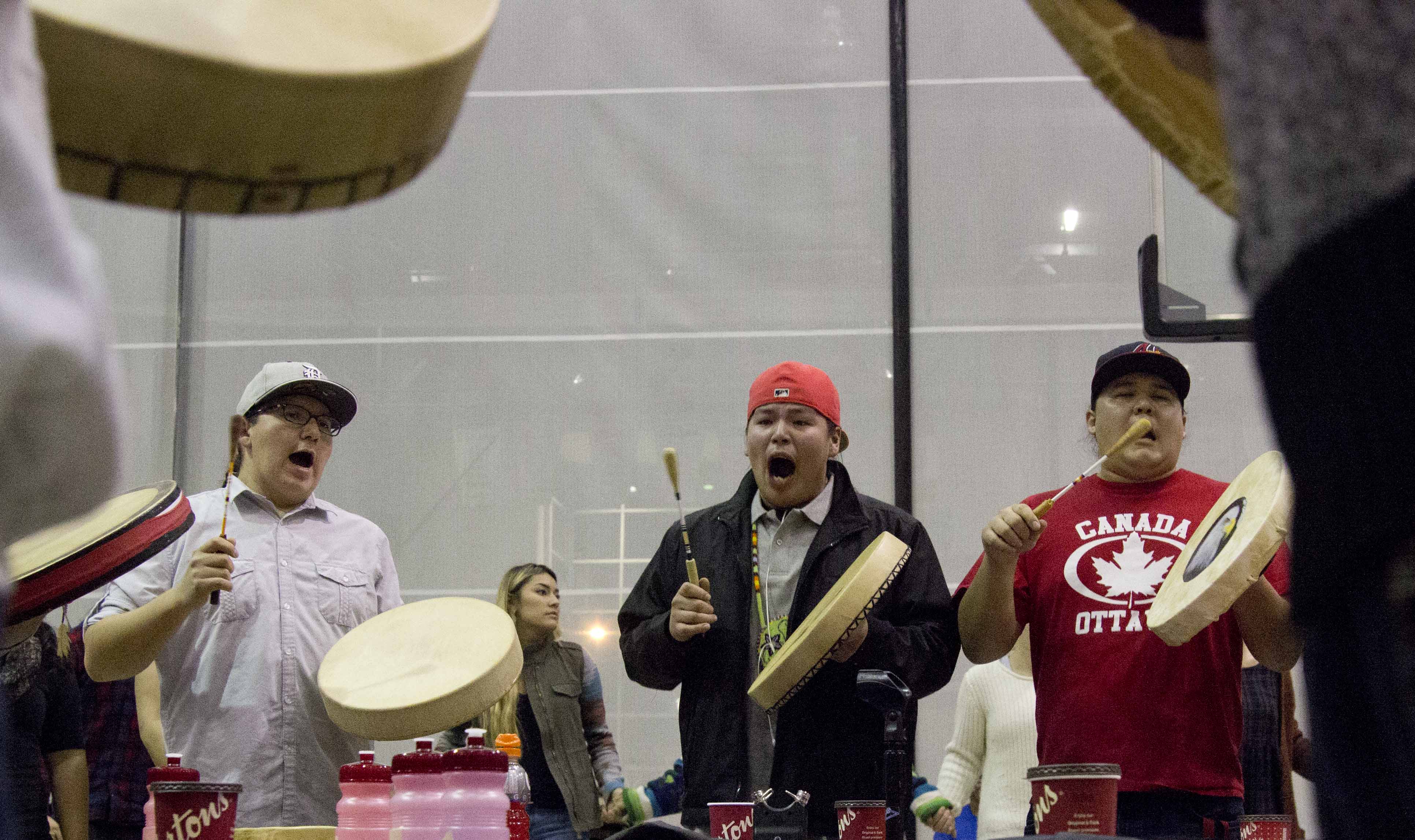Carleton’s 6th annual round dance drew a crowd of more than 100 on Nov. 21. Run by the Centre for Aboriginal Culture and Education (CACE), the night was comprised of a feast followed by traditional singing and round dancing for the rest of the evening.
Naomi Sarazin, CACE Aboriginal liaison officer, said a lot has changed during the past six years, including a move from the initial Porter Hall to the Ravens’ Nest due to a growing performer base.
“We had to move to the Ravens’ Nest to have a bigger space. We’re getting more singers and dancers out—tonight we have about 20 singers registered and they’ve travelled in from Toronto, North Bay, and Quebec, all over the place,” Sarazin said.
The round dance originated from Indigenous peoples living on the prairies, who used them as a way of healing the sick. Over time, the gatherings transformed into social events for dancing and singing, according to Sarazin.
The ceremony was created to bridge the traditional and the modern Aboriginal practices and educate young people about Indigenous culture, with a special focus on remembering and acknowledging ancestors, Sarazin said.
“A lot of it is ceremonial and some of it is more contemporary social dancing . . . It’s to honour those who have passed before us, so we’re dancing with our ancestors,” Sarazin said.
Beverly Lubuk participated in the round dance. She said the large attendance created an atmosphere of excitement and positivity.
“Everybody’s having a good time and there’s a sense of community with the feast, and there’s the elder that cemented everything with a sense of spirituality,” Lubuk said.
The progressively larger turnouts to the round dances mirrors the growth of the Indigenous population at Carleton which, Sarazin said has grown dramatically over the past 10 years.
“The Indigenous community is really strong and growing here at Carleton. I was a student over 10 years ago and I only knew maybe about 20 to 30 students . . . We estimate that there’s about 500 to 700 Aboriginal students at Carleton [today],” Sarazin said.
According to Alexandra Bobek, this quick growth has done nothing to change the atmosphere of warmth and welcoming that exists at every event.
“It’s a very welcoming community. Even not being Indigenous, you feel welcome right away. People include you and there’s no difference,” Bobek said.
According to Sarazin, being welcoming to everyone who wishes to learn is a large part of what CACE stands for.
“We like to share our culture and we’re very open and welcoming to everyone attending all the events and activities that go on,” Sarazin said.
Bobek said getting involved with the Indigenous community was an incredibly enriching experience and something she recommends everyone should try at least once.
“It’s something that everybody should experience—it’s a nice learning experience and a nice socializing experience,” Bobek said.






